#mazon labs
Explore tagged Tumblr posts
Text
Victimes de la Contagion

Et cette fois, c'est fini de Star Saga. Après ces 3 là, je n'ai plus de figurines pour Star Saga.



Peintes en un peu plus d'une heure, pour un résultat loin d'être parfait. L'objectif était de finir les Figurines de Star Saga.
Sans, non plus, les bâcler.

#mantic games#figurine#figurines#mini#mantic#minis#manticgames#star saga#deadzone#deadzoneislife#speedpaint#miniature painting#army painter#miniatures#mini painting#miniature#painting miniatures#painting mini#mazon labs#thearmypainter
7 notes
·
View notes
Note
lemme see ur fossil bivalves pls ily

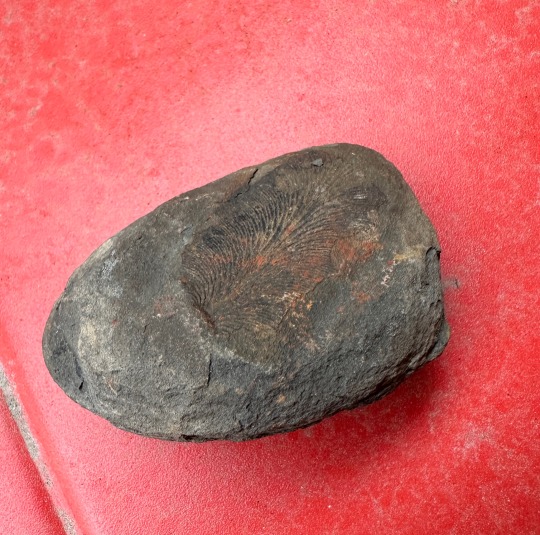


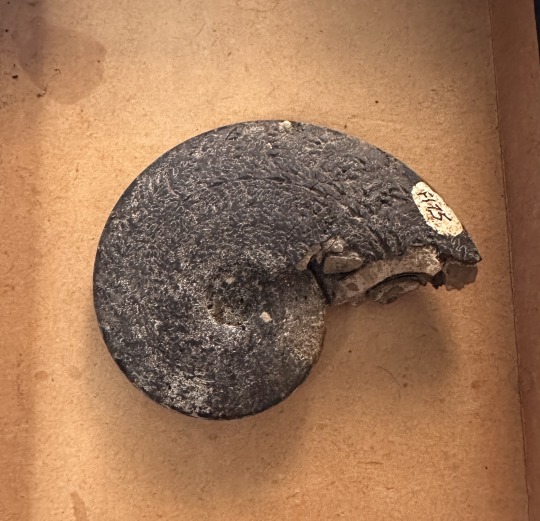

the specific bivalves i was talking about are not available atm (they are in place to freak ppl out) BUT here’s a few pics of my other little fossils!!
1st pic: dug these out of the upper cook mountain formation in south texas myself recently !!
2nd/3rd: mazon creek concretion i got to crack open myself. was very fun!! (i have another cracked one somewhere too, and one also currently in the freezer undergoing an artificial freeze thaw process)
4th: my lil chalice of fossils. mostly from central tx (a few very well preserved echinoids, bivalves, porocystis globularis, gastropods, coral, and ammonite pieces !!)
5th: a pretty well-preserved ammonite i got from a collections lab freebie pile :3
6th: partial mammoth tooth from new mexico!!! i used it as a doorstop sometimes but that felt rude
#talk#ask#i do have pics of some of the bivalves but not the ones suited for nefarious purposes#i pried them out of the side of the river bank when tubing w friends last summer haha !!!
91 notes
·
View notes
Audio
Marta De Pascalis - Sonus Ruinae - synth loops and drones, walking a line between minimalism and space jams (Morphine Records)
Tape loops are a closed path, a cyclic river, a ring around a far planet. They’re similar to our memory, continuously reenacting an artefact that belongs to a precise point in time, brought back in a process of recall where that artifact slightly and slowly becomes imprecise and shifted. An unrested repetition carved into an old pavement, in a city where every generation leaves a new mark, a new incision and maintains an endless process of birth and deterioration. Sonus Ruinae’s synthesizers sounds are gently laid on that closed path, put in a locked repetition and engaged into that eternal dance. While growing up with computer music influences, ranging from glitch to the new century Roman electronic scene, Marta De Pascalis developed her musician skills under the spell of the Italian sound labs sphere, from Gruppo di Improvvisazione to Battiato and other masters that influenced the global movement of sound designers. Her earliest Live performances already showed a special character of improvisation and structure, reduced slowly to become essence, made of synthesis and magnetic tape. Her album Sonus Ruinae is a canvas of harmonics and a sublime place where things are whole, where your first listen is engraved just like that ancient city’s pavement, and Marta endlessly writes beauty on top of it, layer after layer. All music by Marta De Pascalis. Recorded at WORM Sound Studios in Rotterdam, artist's studio and Big Snuff Studio in Berlin, between 2019 and 2020. Mastered by Giuseppe Ielasi. Artwork by Lorenzo Mazon Studio.
#Marta De Pascalis#electronic#drone#synthesizers#minimalism#2020#berlin#germany#morphine records#experimental
14 notes
·
View notes
Text
Unlocking the commons: or, the psychoeconomics of patronage
Nieman Journalism Lab is running its annual predictions for the next year in journalism. I wound up pitching something about audio platforms that is weirdly optimistic about Spotify? but for a hot minute, I tried to talk Jason (and he tried to talk me) into writing something about the new patron economy.
It was too late to pitch it as a prediction, but I couldn't get it out of my head. So I do what I do, which is to write as much of it down as I can. In the end, I couldn't think of a better place to run it than right here at Kottke.org.
Here's the picture as generally agreed upon: ads are still alive and well, but the collapse and consolidation of the ad market means ads alone can't support media companies any more, whether they're big like the New York Times or small like Kottke.org.
There's a puritanical argument that says ads have failed media, they bring out media's worse impulses, and might be inherently bad. The only way to break with the ad model is to break with it completely, and sell media like a product. Make readers pay for content. If they don't pay for it, don't give it to them. Only when media companies are wholly accountable to their subscribers can you fix what's wrong with media. Big companies need paywalls: little ones need exclusive subscribers.
Kottke.org, obviously, does not work this way. It has ads, although those are a very small part of the site and a shrinking part of the revenue. It has members, but very, very little is directed only to them: right now, subscribers to the newsletters get some behind-the-scenes stuff and a few early previews and experiments. Stuff that only real fans even want. The site, the tweets, the RSS feed, and everything else the site's produced or ever will produce is available to everyone, whether they're a member or not.
I call this "unlocking the commons," and it's the same approach I've taken with my Patreon and newsletter. Fans support the person and the work. But it's not a transaction, a fee for service. It's a contribution that benefits everyone. Free-riders aren't just welcome; free-riding is the point.
This, I think, is key to understanding the psychology of patronage. Normally, if you buy a product -- let's say you're buying a book. Books aren't perfect commodities, but they're still commodities. As a shopper, you're trying to get as much value for your book as you can for your money. If I can get the book cheaper and faster from retailer A(mazon) than retailer B(arnes & Noble), most of the time, that's what I'm going to do.
If I'm skeptical of A, and prefer to support B or C(ity bookstore of my choice), I'm not strictly speaking in a purchasing relationship any more, but something closer to a patronage one. I don't just want my money to buy an object; I want it to support institutions and individuals I like, and I want it to support the common good.
This is one of the weird things about patronage. As a consumer, your first thought is to your own benefit. As a patron, it's to the good of your beneficiary. Likewise, as an artisan supported by patronage, you tend to think more about what's best for your patrons and audience than you do yourself.
For instance, when Patreon recently changed its fee structure, I thought about it on two levels. First, it seemed really bad for patrons, slightly less bad for beneficiaries, and clearly helped out Patreon more than either group. As a customer of Patreon -- they're the ones I give my money to -- I felt like I was being ripped off. I was being asked for more money without getting more in return. But as a patron, my first thought was, does this help the people I pledge money to each month? And as a beneficiary, I thought, how does this affect the people who pledge money to me?
In both cases, I wanted what was best for that other person. I wanted them to be getting the full value of the transaction. The only time it was about me was when I thought about my relationship with Patreon -- which is completely different.
Please note that this is not fuzzy-headed idealism or just sentiment: this is as concrete and comprehensive as it gets. It's economic thinking that recognizes that goods don't just exist to be used up, but are objects of labor produced by and for members of a commonwealth. The truth of the transaction is in the whole.
The most economically powerful thing you can do is to buy something for your own enjoyment that also improves the world. This has always been the value proposition of journalism and art. It's a nonexclusive good that's best enjoyed nonexclusively.
Anyways. This is a prediction for 2018 and beyond. The most powerful and interesting media model will remain raising money from members who don't just permit but insist that the product be given away for free. The value comes not just what they're buying, but who they're buying it from and who gets to enjoy it.
The bigger those two pools get -- the bigger the membership, and the bigger the audience -- the better it gets for everyone. This is why we need more tools, so more people can try to do it. PBS as a service.
It's not quite socialized art. Mutualist art, maybe. Proudhon probably would have thought it was pretty cool. So would the Florentines, arch-capitalists as they were. And it might not work. But so far, it's the only model I've found worth trying.
4 notes
·
View notes
Photo







LIGHT GREY ART LAB ICELAND RESIDENCY PROGRAM! Meet TEAM MERLIN!
With just a few more days to apply to join us in 2018, we wanted to show you some of the great times we had on this summer’s adventure to Iceland! We hope you can join us next year! APPLY BY AUGUST 15th!
*****
We are currently looking for adventurous individuals that want to explore the Icelandic landscape, share big concepts with other like-minded people, and have a chance to challenge one’s self to expand how they perceive the creative process, be inspired, and much more.
*****
DETAILS FOR THE 2018 program can be found HERE!
We wrote a mini recap of Team Merlin’s adventures / workshops in the North. Check out the Team Merlin blog post HERE! We’ll be posting little recaps of the other teams’ adventures soon, so keep an eye out!
Each individual on the team provides a workshop to the group on something important to their creative practice, and we are all challenged to think big, push past boundaries, consider new concepts and try new creative techniques in making and ideating. In addition to the workshops each night, the Light Grey team takes the group on daily journeys to epic waterfalls, moody beaches, incredible geological formations and much more.
TEAM MERLIN: Adam Davies, Anne-Louise Erambert, Avner Geller, Britton Robert Snyder, Gabriel Garza, Ingrid Kallick, Isabella Mazzanti, Jeff A. Menges, John DeLucca, Justin Oaksford, Meg Hunt, Mike Freeman, Rory Phillips, Francesca Buchko, and Vitor Lima Mazon.
Questions? Send us a note to [email protected]
#iceland#icelandresidency#LGALicelandresidency#light grey art lab#LGALIcelandResidencyProgram#artresidency#illustration#Wanderlust
16 notes
·
View notes
Text
Engageons la réflexion sur l'avenir de l'Intelligence artificielle
Dans l'actualité de la semaine on ne pouvait pas manquer l'annonce par Axelle Lemaire, secrétaire d'Etat en charge du numérique et depuis octobre dernier de l'innovation, du lancement de la mission "France IA" pour définir une stratégie nationale en Intelligence Artificielle pour la France. Une démarche pleine de sens, tant la France a d'atouts sur ce sujet (mathématiques, ingénieurs, recherche...), mais une démarche tardive à moins de quatre mois d'un nouveau gouvernement... Espérons que cette démarche réussira au moins à boucler sa première étape d'identification des acteurs et à faire parler de ces atouts, à défaut de pouvoir déjà fédérer ces acteurs façon "French Tech" avec par exemple un label "France IA" démontrant la qualité du savoir faire français. Les domaines de l'IA sont très vastes, mais tous sont stratégiques pour l'évolution de l'Industrie et des services numériques. Il rassemblent principalement :
l'apprentissage automatique (machine learning)
la vision des ordinateurs en temps réel ou par analyse d'images/vidéos
les robots intelligents (versus simplement programmés)
les assistants virtuels
la reconnaissance du langage (speech to speech)
la reconnaissance des gestes
En parlant d'intelligence artificielle, aujourd'hui les plateformes GAFA+MI n'en sont plus à simple la réflexion. Elles sont opérationnelles ! Leurs organisations ont recruté les meilleurs spécialistes, elles ont racheté ou investi dans les startups disruptives et se font la course pour trouver le modèle économique qui dominera :
Google a développé une stratégie d'enrichissement de ses services avec Google Now qui vise a être votre assistant personnel, mais aussi Google Maps et les débuts d'Allo qui amène son IA dans une messagerie instantanée pour devenir un assistant virtuel.
Amazon a surpris toute l'industrie avec "Echo" - dont GreenSI a déjà parlé - un appareil dans la maison dopé à l'IA d'Alexa pour déplacer cette assistance virtuelle dans le quotidien et non en mobilité (où le smartphone reste le terminal n°1 en attendant la voiture)
Facebook
Apple, le pionnier avec Siri, l'assistant virtuel sur iPhone, mais qui dans ce domaine aussi peine a se renouveler et innover depuis quelques années.
Microsoft, avec une stratégie résolument dans le Cloud depuis l'arrivée de Satya Nadella, où la Cortana Intelligence Suite et les "Azure Cognitive Services" sont mis à la disposition des entreprises qui développent des applications pour les enrichir avec de l'IA.
IBM parti plus tôt avec Watson dès 2011, qui est devenu une division d'IBM en 2014, a une stratégie similaire mais totalement orientée vers les grandes entreprises, même si ses services sont disponibles en ligne sur BlueMix sa "plateform as a service" (PaaS).
GreenSI, a une position plus tranchée sur Facebook qui semble un peu derrière ces acteurs sur le plan des réalisations opérationnelles. Annonce de "M" en 2014, ouverture d'un Lab (à Paris) en 2015, pourtant son IA est uniquement présente avec des "bots" dans Messenger dont l'intelligence est réellement dans l'ecosystème des startups comme Chatfuel qui permettent de les faire fonctionner. Et ce malgré une communication bien rodée en fin d'année dernière avec la vidéo "intime" de Mark Zuckerberg parlant à Jarvis qui pilote sa maison. Mais si on regarde quelques années en arrière, les jeux dans Facebook ont explosés avec des sociétés comme Zinga et non avec des développements propres. Rappelons-nous aussi que Facebook a failli rater le virage mobile en 2011. Leur application interne n'était pas au point. C'est le rachat d'Instagram (2012) puis de Whatsapp (2014) qui leur a donné la légitimité et qui a fait décoller leur cours de Bourse mi-2013, une fois les analystes rassurés sur le fait que Facebook pourrait capter la manne de la publicité mobile. La stratégie de Facebook semble donc pour l'instant beaucoup plus axée sur son écosystème et la co-innovation. Cela pourrait changer quand Facebook exploitera les conversations de ses 1,7 milliards de membres actifs mensuels (1 sur mobile) et mieux connaître le genre humain... Dans les autres acteurs, on peut aussi citer ceux qui sont en embuscade et qui entrerons dans le peloton de tête de façon opportuniste avec un rachat ou de nouveaux services, mais qui pour l'instant agissent via leur fonds d'investissement qui prennent des positions : Salesforce (Digital Genius, MetaMind ), Samsung et pourquoi pas le français AXA qui avec AXA Ventures s'interesse de très près au sujet dans ce qui pourrait outiller la santé (Neura, BI Beats, Medlanes) ou la location immobilière (price methods devenu Wheelhouse) Au niveau des applications, les assistants virtuels et les objets intelligents (et connectés) en B2C et B2B,vont certainement tirer les usages à court terme. Dans les assistants virtuels, attendons-nous a voir les sites fleurir des "chatbots" pour améliorer la qualité de service en ligne dont une partie sous Facebook. En terme d'industries, la santé est celle qui oriente 15% des investissements des startups (selon CB Insights) suivi de près par l'expérience client et l'analyse de données. Le marché B2C sera donc tiré par la santé et le B2B pour les deux derniers. L'IA n'est pas non plus une nouveauté puisque l'origine est souvent donnée à "Computing Machinery and Intelligence" d'Alan Turing en 1950 et les premiers algorithmes de diagnostic médical datent des années 1970 (Mycin). Notre ex-pépite nationale Ilog créée en 1987 s'est faite avaler par IBM en 2009. On constate donc une effervescence mondiale, et des investissements en hausse depuis 2010. Les voyants de la stratégie française devaient donc clignoter depuis longtemps quand Axelle Lemaire est passée devant, et finalement malgré un contexte peu favorable a décidé de relever le défi avec Thierry Mandon (Recherche). Oui, la "France des ingénieurs" a une certaine avance sur le sujet. Car même si elle fleurte avec le dernier rang du classement PISA en mathématiques au collège, sa recherche et son enseignement supérieur sont au plus haut niveau mondial. L'ambassade de cette excellence comptant dans ses rangs Cédric Villani, médaille Fields en 2010, qui par sa photo officielle qui a fait le tour du monde, incarne à merveille la modernisme et la tradition pour les sciences. L'intelligence artificielle est aussi un vrai sujet de société qui dépasse largement le champ du numérique, puisqu'elle vise à développer des dispositifs imitant ou remplaçant l'humain. Son rôle dans la société sera donc certainement débattu, domaine par domaine, industrie par industrie dans les années qui arrivent. L'algorithme est déjà sous les feux du débat, avec la question très naïve de sa neutralité, mais l'IA va plus loin puisqu'elle donne la main à un machine. L'IA sera acceptée quand elle permettra par exemple de sauver des vies en accélérant les décisions et en réduisant les risques d'erreurs de diagnostic, mais certainement très challengé quand les usines Michelin de Clermont-Ferrand auront plus de robots que d'humains syndiqués... Ce débat a été lancé cette semaine au Forum Economique Mondial de Davos où Satya Nadella participait à un débat sur l'intelligence artificielle : "Quels profits la société toute entière peut attendre de l’IA". Le PDG de Microsoft a défendu l'idée que ceux qui disposent des platerformes d'IA devraient l'orienter vers des tâches aidant les humains plutôt que supprimant des emplois. Au delà de l'intention très louable de Microsoft, et de l'humanisme avéré de son leader, ne soyons quand même pas dupes, car cette question est celle qui différencie un Microsoft d'un Google pour rejoindre le cercle très fermé des GAFAs... Microsoft ou IBM en B2B vendent leur technologie à des entreprises qui décideront des usages. On a encore du mal a croire qu'ils refuseront une vente quand un patron d'usine viendra les voir pour outiller ses usines avec leur technologie. Il est aussi probable que les investisseurs qui depuis 2011 mettent des centaines de millions dans le développement de startups visent en priorité les usages qui valoriseront le mieux leur participation sans nécessairement prendre en compte l'avenir de l'humanité.
Google, Facebook, IBM, Microsoft et Amazon ont aussi créé un alliance pour instaurer de « bonnes pratiques » dans ce domaine, et mieux informer le grand public. Et puis à la conférence Frontiers en octobre dernier (billet GreenSI), la Maison Blanche avait organisé un débat et pris des engagements sur l'IA et les robots.
Donc oui, la France a un autre risque de retard. Celui de ne pas participer à la réflexion sur l'éthique de l'IA qui est enjeu majeur dans les années qui arrivent.
Une réflexion qui se traduira demain en usages standards qui pourraient s'imposer à tous, et surtout ne pas limiter les usages qu'on ne voudrait pas voir se développer. Car dans ce jeu, les plateformes mondiales seront certainement les plus influentes, et il sera ensuite trop tard de vouloir interdire telle ou telle plateforme depuis le sol français, ou européen. L'IA n'est bien sûr pas un ennemi mais un redoutable allié au service de la stratégie d'entreprise, et certainement du développement de nouveaux services intelligents pour l'industrie et la ville numérique. C'est surtout une compétence qui se marie très bien avec les capteurs et l'augmentation du nombre de données capturées par les systèmes d'information. Dans l'entreprise en 2017, GreenSI conseille donc que ce soit l'année de la réflexion pour anticiper cette technologie qui au-delà de transformer les usages va modifier les relations entre l'Homme et la machine. Une autre façon de se repenser son avantage concurrentiel. from www.GreenSI.fr http://ift.tt/2jQmZxb
1 note
·
View note
Text
Museum Review: Field Museum of Natural History Chicago
I may be biased in this review (which is also why it is my first post) as this museum is near and dear to my heart. When I was growing up it seemed like we went to the Field Museum every other weekend (with Brookfield Zoo on the other alternating weekends. My now husband’s/ then boyfriend’s proms were held there. I’ve also done several internships there. AND my husband proposed to me on their front steps. In short I love it. But why?
*Pictured below is me at my senior prom, 2012

The Field Museum is broken up into certain areas of study (Geology, Zoology, Botany, and Anthropology). Their major exhibits follow suit. The Evolving Planet is what it sounds like: is takes you through from Earth’s beginning until today and what animals were around during each time period. Very well done, it follows a single path, so it’s not a wandering-type exhibit. Since I am biased for the paleontology exhibit, here are my favorite displays:
1.The Cambrian room, where a realistic, animated video of the weirdest creatures that you can imagine that once scuttled about the ocean floor plays with a soothing musical score, showcases a variety of trilobites.
2.The carboniferous forest and Mazon Creek room. Imagine a forest with a giant (non-scary) centipede and that’s what you get with this room. Gorgeous. The Illinois state fossil, the Tully Monster, is housed at the end of it. Just google it; it really is the weirdest choice of a state fossil, but hey when you live in a state of mostly crinoids and shelled creatures, it’s pretty interesting.
3. The synapsid and “amphibian” room. This room gets you to the roots of where mammals and reptiles diverged. It has a soft spot in my heart since I helped rehouse Dimetrodon fossils in their collections. Yes, Dimetrodon is a relative of mammals not dinosaurs as many toys and movies want you to believe. The amphibian tree of life gets all wishy washy as you go earlier in time hence the quotes.
4. Its largest room is of course the dinosaur room. SUE the famous T-rex lives at the museum and is currently being rehoused into a room next to the main dinosaur display (she used to be on the main floor of the museum but now a Titanosaur has taken her place). The main favorites are all here: Stegosaurus, several Ceratopsians and Sauropods, a few Theropods, and Parasaurolophus. A childhood favorite is making the noise of a Parasaurolophus with their air compression chamber. There are animated videos and buttons that pronounce dinosaur names. *Pictured below is me being a raptor (this isn’t a raptor however) wrangler circa the first Jurassic World Movie

5. I’m less of a mammal-person than anything but their evolution of horses display as well as the evolution of hominids is informative for those interested in “seeing evolution.” There is also an impressive giant sloth display, and an ice age display (can’t have a paleontology exhibit without a mammoth!). Don’t forget to play with the very-dated tar display showing how larger animals had a much tougher time getting out of tar by allowing you to pull up on bars submerged in tar. Many memories with that display.
There is also a large collection of minerals on display as well as the Hall of Gems, Hall of Jade, and a meteorite display showcased in true museum fashion behind cases with small labels and informative signs. Their botany collection is often overlooked but it’s worth to go check out as I’ve learned so many new things about plants I already know about as well as about plants I may never see. It’s a pretty big display of plants that people tend to walk by but I definitely advocate a walk through. The Egypt exhibit is excellent. You have the choice of walking through a ruin (with real hieroglyphics!) where you walk down a winding staircase to the lower level, where there are countless animal and human mummies, as well as artifacts. Theres a display on how they used to gather water that used to allow kids of all ages to try their bucket system with water but I guess there must have been messes as now it’s just something to look at (it’s less fun to look at as it is to dunk the bully system into the water). But look for fish in the reeds display as they are real. The Nature Walk is an amazing collection of taxidermy animals. Theodore Roosevelt hunted some of these animals for conservation purposes! The halls are a mix of animals that live in the same environment and by type of animal (i.e. birds, cats). You could spend hours just in there alone. The real lions of Tsavo are here! An old but goody is the Underground Adventure exhibit where you “shrink” to bug size and walk amongst huge, animatronic arthropods. There isn’t much to read about but it’s still fun. There are also displays of Ancient Americas, Pacific Islands, China, Africa, and conservation that offer insight into a variety of cultures and showcases the work of the scientists at the museum. The Field Museum has many traveling and in-house-made exhibits that are always worth the extra mummy. Currently, an exhibit on Dinosaurs from Antarctica (featuring someone from the museum with whom I have interned/ volunteered on research projects) is a pay-to-see exhibit and it is well done with showing how field expeditions in Antarctica go, displaying full size fossil skeletons and reconstructions, and exhibiting other work besides paleontology being performed at labs at the bottom of the world. Gift shops (plural) are great but the large main one is outside of the museum ticket counters and sometimes something you want is at a different gift shop back in the museum so it’s not exactly a one-stop-shop; see something you want? just get it then.
On a side note, Members Nights and Dozing with the Dinos are AMAZING. You get to see labs, behind the scenes collections, and what’s up and coming for members nights, and there are programs and of course camping out besides your favorite displays for Dozing with the Dinos. For you, liquor-lovers out there, they do special nighttime events with their own and local brews.
The Field Museum also participated in the March for Science and Science Expo in 2017 and held a science day in 2017 (they even gave us matching shirts so that we could walk as a unit *see below photo). Excellent museum? Check. Huge collection? Check. Advocates for the sciences? A Million Checks.

A little expensive but worth everything. Expect to spend several hours enjoying it.
0 notes
Text
Unlocking the commons: or, the psychoeconomics of patronage
Nieman Journalism Lab is running its annual predictions for the next year in journalism. I wound up pitching something about audio platforms that is weirdly optimistic about Spotify? but for a hot minute, I tried to talk Jason (and he tried to talk me) into writing something about the new patron economy.
It was too late to pitch it as a prediction, but I couldn’t get it out of my head. So I do what I do, which is to write as much of it down as I can. In the end, I couldn’t think of a better place to run it than right here at Kottke.org.
Here’s the picture as generally agreed upon: ads are still alive and well, but the collapse and consolidation of the ad market means ads alone can’t support media companies any more, whether they’re big like the New York Times or small like Kottke.org.
There’s a puritanical argument that says ads have failed media, they bring out media’s worse impulses, and might be inherently bad. The only way to break with the ad model is to break with it completely, and sell media like a product. Make readers pay for content. If they don’t pay for it, don’t give it to them. Only when media companies are wholly accountable to their subscribers can you fix what’s wrong with media. Big companies need paywalls: little ones need exclusive subscribers.
Kottke.org, obviously, does not work this way. It has ads, although those are a very small part of the site and a shrinking part of the revenue. It has members, but very, very little is directed only to them: right now, subscribers to the newsletters get some behind-the-scenes stuff and a few early previews and experiments. Stuff that only real fans even want. The site, the tweets, the RSS feed, and everything else the site’s produced or ever will produce is available to everyone, whether they’re a member or not.
I call this “unlocking the commons,” and it’s the same approach I’ve taken with my Patreon and newsletter. Fans support the person and the work. But it’s not a transaction, a fee for service. It’s a contribution that benefits everyone. Free-riders aren’t just welcome; free-riding is the point.
This, I think, is key to understanding the psychology of patronage. Normally, if you buy a product — let’s say you’re buying a book. Books aren’t perfect commodities, but they’re still commodities. As a shopper, you’re trying to get as much value for your book as you can for your money. If I can get the book cheaper and faster from retailer A(mazon) than retailer B(arnes & Noble), most of the time, that’s what I’m going to do.
If I’m skeptical of A, and prefer to support B or C(ity bookstore of my choice), I’m not strictly speaking in a purchasing relationship any more, but something closer to a patronage one. I don’t just want my money to buy an object; I want it to support institutions and individuals I like, and I want it to support the common good.
This is one of the weird things about patronage. As a consumer, your first thought is to your own benefit. As a patron, it’s to the good of your beneficiary. Likewise, as an artisan supported by patronage, you tend to think more about what’s best for your patrons and audience than you do yourself.
For instance, when Patreon recently changed its fee structure, I thought about it on two levels. First, it seemed really bad for patrons, slightly less bad for beneficiaries, and clearly helped out Patreon more than either group. As a customer of Patreon — they’re the ones I give my money to — I felt like I was being ripped off. I was being asked for more money without getting more in return. But as a patron, my first thought was, does this help the people I pledge money to each month? And as a beneficiary, I thought, how does this affect the people who pledge money to me?
In both cases, I wanted what was best for that other person. I wanted them to be getting the full value of the transaction. The only time it was about me was when I thought about my relationship with Patreon — which is completely different.
Please note that this is not fuzzy-headed idealism or just sentiment: this is as concrete and comprehensive as it gets. It’s economic thinking that recognizes that goods don’t just exist to be used up, but are objects of labor produced by and for members of a commonwealth. The truth of the transaction is in the whole.
The most economically powerful thing you can do is to buy something for your own enjoyment that also improves the world. This has always been the value proposition of journalism and art. It’s a nonexclusive good that’s best enjoyed nonexclusively.
Anyways. This is a prediction for 2018 and beyond. The most powerful and interesting media model will remain raising money from members who don’t just permit but insist that the product be given away for free. The value comes not just what they’re buying, but who they’re buying it from and who gets to enjoy it.
The bigger those two pools get — the bigger the membership, and the bigger the audience — the better it gets for everyone. This is why we need more tools, so more people can try to do it. PBS as a service.
It’s not quite socialized art. Mutualist art, maybe. Proudhon probably would have thought it was pretty cool. So would the Florentines, arch-capitalists as they were. And it might not work. But so far, it’s the only model I’ve found worth trying.
Tags: economics kottke.org patronage via kottke.org http://ift.tt/2yGitai
0 notes
Text
Dr. Lukas Koyner - Mazon Labs

Encore une de bien peinte :D

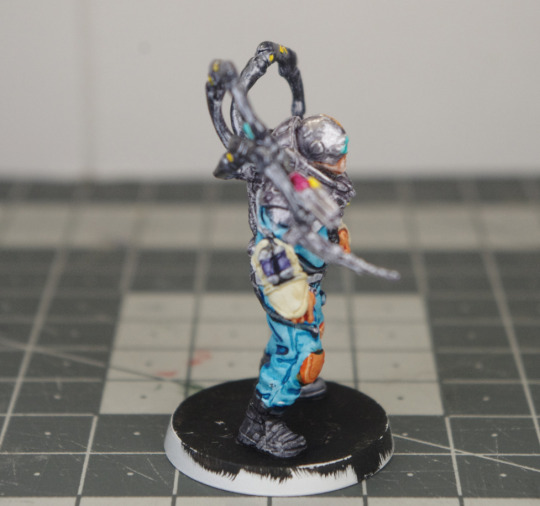
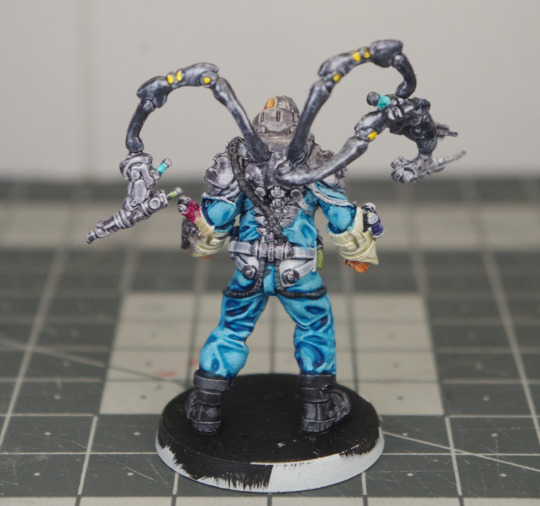
Ou presque, il manque 2 petits endroits que je n'ai pas du tout vu avant de mettre la photo ci-dessus en ligne.

#mantic games#figurine#figurines#mini#mantic#minis#manticgames#star saga#deadzone#deadzoneislife#speedpaint#miniature painting#army painter#miniatures#mini painting#miniature#painting miniatures#painting mini#mazon labs#thearmypainter
10 notes
·
View notes
Text
Rangers et Marines de la corporation Mazon Labs

Un petit groupe de 9 rangers et marines enfin terminés.
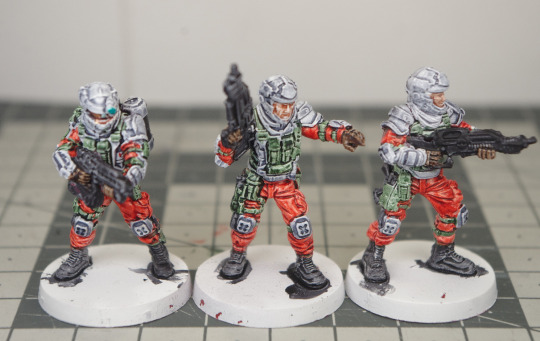



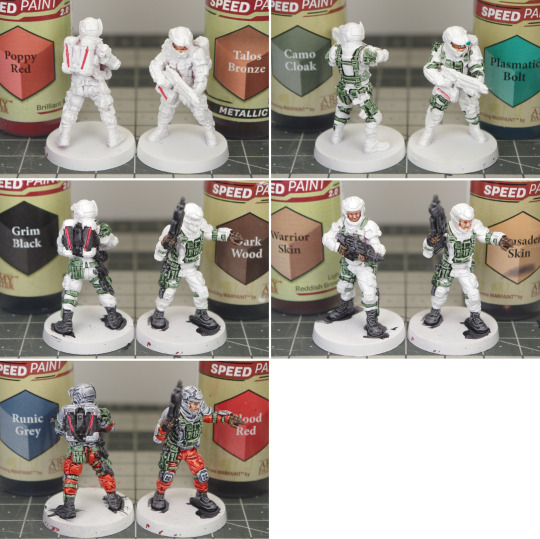
#mantic games#figurine#figurines#mini#mantic#minis#manticgames#star saga#deadzone#deadzoneislife#speedpaint#miniature painting#army painter#miniatures#mini painting#miniature#painting miniatures#painting mini#mazon labs#thearmypainter
7 notes
·
View notes
Text
Techniciens de laboratoire Mazon Labs


Dernière fournée de techniciens de laboratoire de Mazon Labs





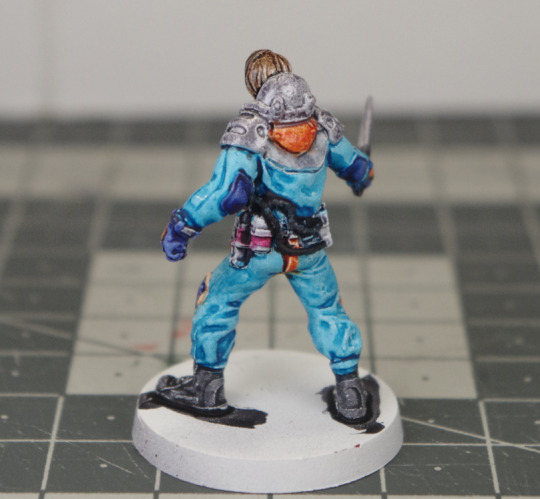
J'en ai profité pour tester différentes couleurs pour les cheveux

#mantic games#figurine#figurines#mini#mantic#minis#manticgames#star saga#deadzone#deadzoneislife#speedpaint#miniature painting#army painter#miniatures#mini painting#miniature#painting miniatures#painting mini#mazon labs#thearmypainter
6 notes
·
View notes
Text
Chovar Neuro-connecté Unité de stockage organique X-02-A

La dernière figurine qui était prête à peindre est finie.



Il ne fait vraiment pas bon d'être un Chovar capturé par Mazon Labs.

Imaginez-vous coupé de tous contact avec vos semblables sans moyen de communiquer, maintenu prisonnier, immobile, témoin silencieux de toutes les atrocités qui sont pratiqués par vos geôliers, votre personnalité refoulée au plus profond par des traitements médicamenteux et la torture, recevant et envoyant sans cesse des informations au travers d'implants neuronaux complexes et douloureux, uniquement maintenu en vie par une machinerie complexe. Insupportable. Insupportable seulement si vous en avez conscience.
#mantic games#figurine#figurines#mini#mantic#minis#manticgames#star saga#deadzone#deadzoneislife#speedpaint#miniature painting#army painter#miniatures#mini painting#miniature#painting miniatures#painting mini#mazon labs#chovar#thearmypainter
5 notes
·
View notes
Text
Photo de groupe octobre 2024

Groupe plus petit que pour septembre mais plus grand que prévu.
Et je ne pense pas être en manque pour les mois à venir :

Finir ma série de Zombie, faire des héros pour Dungeon Saga ou encore reprendre des figurines pour Star Saga...
Mais je ne m'interdis pas de faire d'autre choses... (des décors ???)
#mantic games#figurine#figurines#mini#mantic#minis#manticgames#crazy box#star saga#deadzone#deadzoneislife#speedpaint#miniature painting#army painter#miniatures#mini painting#miniature#painting miniatures#painting mini#rebs#barroom brawl#enforcers#dungeon saga#plague#contagion#mazon labs#thearmypainter
7 notes
·
View notes
Text
ES345 ‘Monarch’

Etaler un peu de peinture sur plusieurs jours. C'est pas mal aussi.


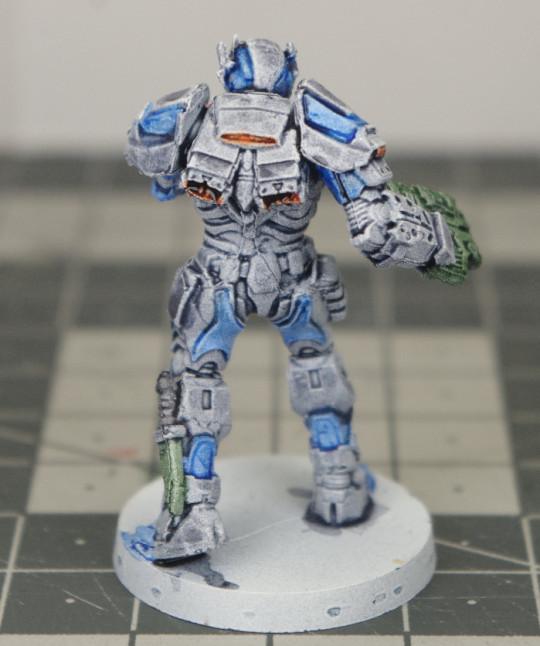

#mantic games#figurine#figurines#mini#mantic#minis#manticgames#star saga#deadzone#deadzoneislife#speedpaint#miniature painting#army painter#miniatures#mini painting#miniature#painting miniatures#painting mini#mazon labs#thearmypainter
3 notes
·
View notes
Text
A cours de primer
Alors que je mettais du primer sur les consoles du jeu Star Saga, j'ai découvert que la bombe était déjà en train de se finir.
J'ai cru que je n'aurai pas assez pour au moins finir les consoles.

N'ayant aucune idée des couleurs à appliquer, j'ai tester sur une des consoles.

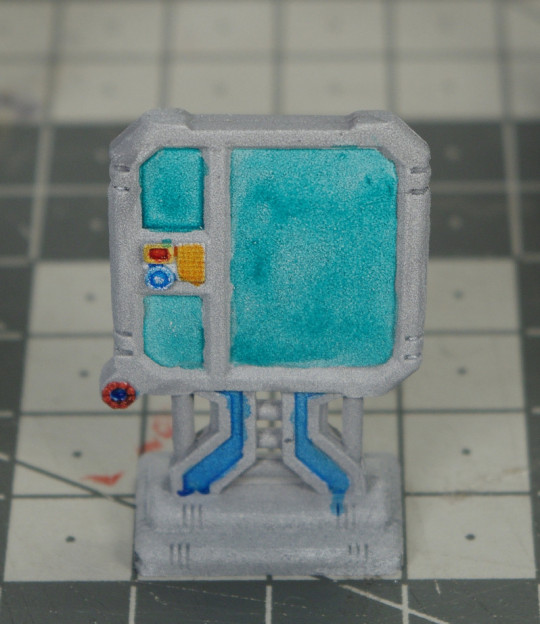
Holy White pour le cadre, du Magic blue pour le piétement et d'autres détails, Zealot Yellow pour le clavier et le tour du voyant, du Red Blood pour le commutateur et le voyant et enfin Plasmatic bolt pour les écrans.
Pas si mal même si j'ai vraiment pas très bien peint.
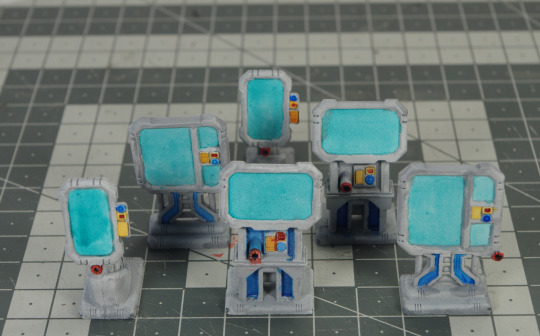
Et voilà, une fois fini. Je suis pas hyper satisfait. Mais en cela ira.
#mantic games#star saga#figurine#figurines#miniatures#miniature#mini#deadzone#mantic#mazon labs#minis#miniature painting#army painter#speedpaint#manticgames
11 notes
·
View notes
Text

Prendre enfin du temps pour finir les Marines de la corporation. Et j'ai choisi "Red Blood" pour la couleur des combis.
Quelques retouches toujours à faire. Je ne me suis pas attardé sur les visages.
J'ai aussi commencé les Patrouilleurs de la corporation.

Sur ceux-ci, i il faut que j'assombrisse les armes. Elles font trop gris.
#mantic games#star saga#figurine#figurines#miniatures#miniature#mini#deadzone#mantic#minis#miniature painting#army painter#speedpaint#manticgames#mazon labs
7 notes
·
View notes